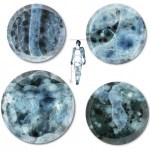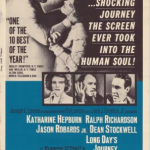health
Here's a guest entry from Charm Quark, one of the bloggers at Skepchick Sweden. When I read it there I asked her to give me a translation for Aard.
I have alopecia, an autoimmune disease in which hair follicles go into a resting phase, causing hair loss. The form I've got, alopecia areata, causes hair to fall out in in patches. The disease continuously regresses and relapses, and I have gone trough several bouts since the age of seven. Luckily, the disease is completely harmless and I have no other symptoms, but you appear to be very ill indeed when you have no hair/eyebrows/eyelashes.…
Photo: KENPEI, Wikimedia Commons.
Researchers have isolated an antimicrobial peptide from swallowtail butterflies, Papilio xuthus (image above). After creating a synthesized version of the peptide they called Papiliocin, they wanted to know how it worked. What they found was that Papiliocin causes yeast cells (Candida albicans) to accumulate reactive oxygen species, which triggers a process called apoptosis, or programmed cell death. To see a neat video describing apoptosis, click here.
Papiliocin is not only an anti-fungal. This versatile peptide is also antibacterial, although…
You must go read the chilling and amusing account of Jamie Bernstein and Ken Reibel's visit to the AutismOne Conference in the Chicago area. The story has all the elements. Horror:
(that's what they were forced to eat); Police Absurdity (though not brutality); Screeching Breathless Paranoia; Jenny McCarthy; and Chemical Castration.
The story is told by Jamie across two blogs: Autism One, Part One on Skepchick and How I Got Kicked Out of the AutismOne Con: Part 2 on Friendly Atheist. Ken Reibel gives his version of the events here.
No! A surprising number of toddlers who manage to get their way through a window opening to fall to the pavement below live. Something just over three thousand toddlers do this every year in the US.
Kids fall all the time. About 2,300,000 US children (under 14 years old) are treated at a hospital for a fall annually. Of these, a mere eighty die of the fall, though a much larger number are permanently injured or left in persistent vegetative state. Most, more than half, of these child-falls are accounted for by toddlers (age 5 and under).
Falling is patterned. Infants tend to fall from…
Animated Anatomies, a new show at the Perkins Library at Duke University, explores the tradition of fold-out or pop-up paper anatomical diagrams:
Animated Anatomies explores the visually stunning and technically complex genre of printed texts and illustrations known as anatomical flap books. These publications invite the viewer to participate in virtual autopsies, through the process of unfolding their movable leaves, simulating the act of human dissection. This exhibit traces the flap book genre beginning with early examples from the sixteenth century, to the colorful "golden age" of…
. . . let the table settings do the talking (and the grossing out) for you! These Consumption Dinnerware plates by Leah Piepgras "are a map of the digestive tract, from mouth to anus:"
I'm trying to decide if these plates have a future as a diet aid.* Visualizing the eventual chyme-ish fate of a bolus of taco salad might just induce me to eat less. . . on the other hand, the dreamy blue watercolor palette makes me think of snowflakes, not chyme and gall. And I think I've done too many dissections for a medical illustration to have much of an effect.
Via the design blog CollabCubed.
*you…
I was playing The Fracking Song last night about midnight, and my boyfriend was grooving to it. At the end he asked, "what was that about?" "Uh. . . fracking."
"Which kind of fracking?"
Yes, we are a BSG household.
Anyway, it may be an explainer, but it's actually quite a nice little piece of music too. And I'm a sucker for good typography any day.
Is your fracking attention span longer than 2:33? Then go dig around in ProPublica's fracking investigation. "The Fracking Song" is by members of Jay Rosen's NYU graduate journalism class. Nice work, guys!
Through the end of May, UMBC's Albin O Kuhn gallery is hosting a large exhibition of postmortem daguerreotypes, death masks, coffin plates, etc. from the collection of Dr. Stanley Burns.
Medical ephemera always have an emotional valence, because they represent patients who suffered, struggled and eventually lost their physical battles. But this collection of memorials are about the survivors' needs, not the dead, and are thus particularly eerie and wrenching.
From the curator:
Trace the evolution of postmortem photography through 19th-century daguerreotypes and prints from Sleeping Beauty…
Thanks moms! Slightly more than half of everything we are we owe to you. :)
Song by cadamole - late of the St. Patrick's Day song.
It seems like every time I take Huxley (now 18 months old) to the doctor, the following things happen: 1) Somebody says "Well, he won't need to get stuck with any needles for a long while now .... his next scheduled immunization is [insert phrase indicating 'a long time into the future']"; and 2) Huxley gets stuck with some needles.
The last time, a few days ago, was especially bad.
We hung around in the exam room for a while, and Huxley was in a very happy mood. He learned to say "Elmo" and how to point to the "Otoscope" when asked. The doctor, having recently had a baby of her own,…
Anatomical engraving from Henry Gray's Anatomy, 1858.
A month or so ago, Abrams books reached out to mention that they were releasing a new title, Human Anatomy: A Visual History from the Renaissance to the Digital Age. I said, "don't I already have this book?" It turns out I did - I had the previous, hardback edition which I picked up for $25 or so on Amazon (a deal, I thought at the time). So I knew this book should really be subtitled "vintage eye candy from Vesalius to Schmiedel," because it's a bundle of rich images from anatomical atlases, interspersed with just enough curation to give…
"School sucks, right? I mean you do what you can to improve it, but in the end, there's a limit. Because it's school. And 'school sucks.' Remember?" -Louis C.K.
At every level, education always seems to be a hot button issue. Whether it's in primary and secondary schools, where testing at every level is the primary means to evaluate teachers, or in adult life, where we're always hearing about how scientifically illiterate the public is, we have pressing issues facing us.
And we can't be experts in everything, even the best of us.
Image credit: NASA and the European Space Agency.
Sure, if…
Wow - my post about unhappy bio grad students is getting massive traffic. (Hi SlashDotters and StumbleUpon-ers!) Mike the Mad Biologist, my original inspiration, has responded here and here to all the buzz.
I pretty much said everything I wanted to say in the original post, and I don't pretend to have an explanation or cure for this problem. But I see that there's been some snarkiness on the intertubez (shocking!!!) while I was away watching the developments in the Myriad appeal. So I want to clarify two points.
First, let me emphasize that I'm not saying graduate students in other fields don…
The oral arguments in Monday's Myriad appeal are online here. (Scroll down and look for Association for Molecular [Pathology] v. PTO).
Tomorrow morning, a three-judge panel of the Court of Appeals for the Federal Circuit will hear arguments in the appeal of Association for Molecular Pathology v. U.S. Patent and Trademark Office - better known as the Myriad gene patent case.* It has the patent and genetic blogospheres in a bit of a tizzy, and the mainstream media is picking up on it too. See, for example, this Atlantic article by Andrew Cohen, this Nature.com editorial by my friend Shobita Parthasarathy, and even a "Spectator's Guide to the Myriad Oral Argument" by Genomics Law Report -- which has a dedicated icon and…
Shambling, slowly disintegrating zombies aren't good for much - but maybe they're helpful for teaching neurobiology?
The Zombie Autopsies with Steven Schlozman, MD from GCP authors on Vimeo.
It is all about braaaaiiiiiinnns, after all. . . .
Read all about Zombie Autopsies here, or head to Amazon.
I can think of a few answers, but the Name Inspector points out that naming food is one: apparently the Corn Refiners Association is trying to rename "high fructose corn syrup" "corn sugar."
it's gotten an especially bad rap lately, partly because it has a name so long and scientific sounding that it has to be abbreviated.
First off, I don't think "high fructose corn syrup" is all that "scientific sounding"; try "monosodium glutamate" on for size and get back to me. It's also not that long: six syllables, people! But the interesting issue is that the aura of high-tech innovation and space-…
A really interesting post from Deborah Blum on the "radium girls" who painted wristwatches in the 1920s - to fatal effect:
At the factory, the dial painters were taught to shape their brushes to a fine point with their lips, producing the sharp tip needed to paint the tiny numbers and lines of watch dials, the lacy designs of fashionable clocks. Each worker was expected to paint 250 dials a day, five and a half days a week. They earned about $20 a week for that work, at a rate of one and a half cents per completed dial.
The painters were teen-aged girls and young women who became friendly…
In the latest news from Fukushima, water in Tokyo has been deemed unfit for babies to consume because of high radiation levels. Not surprisingly, shortages of bottled water are emerging, as people buy up larger quantities.
A top Japanese official urged residents of the nation's capital not to hoard bottled water Wednesday after Tokyo's government found that radioactive material in tap water had exceeded the limit considered safe for infants.
"We have to consider Miyagi and Iwate and other disaster-hit areas," Chief Cabinet Secretary Yukio Edano said. "I'd like to again urge consumers not to…
The federal government, including NIH, isn't exactly seen as a hotbed of artsy drama types. ("Faceless gray mega-bureaucracy" might be a more typical descriptor.) So I was tickled to learn that the National Institute on Drug Abuse is framing a series of continuing medical education (CME) courses about addiction around dramatic readings of Eugene O'Neill's Long Day's Journey Into Night. And no, we're not talking about cheesy readers' theater - they got Debra Winger and several Tony nominated stage actors to participate.
As a threshold matter, this is cool because it shows that NIH recognizes…







